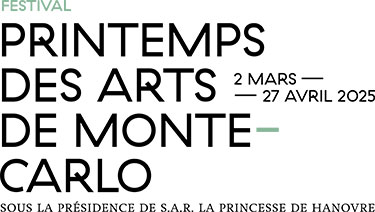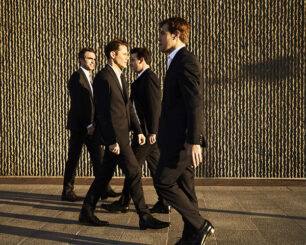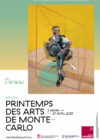At the close of the 18th century, German theorist Heinrich Christoph Koch noted in his Introductory Essay on Composition (1793) that the string quartet was the hardest genre for a musician – “which only a fully-trained and experienced composer who has already written several works can master”. A few years later, in 1810, musicologist Johann Conrad Wilhelm supported this view in an article entitled “Quartet Music”, explaining that writing for this ensemble “demands strong compositional skills”. The genre seems to embody a quintessential form of chamber music. The great 18th century series – Joseph Haydn’s eighty or Luigi Boccherini’s ninety quartets – dwindle in favour of fewer and more individualised works. The Beethovenian legacy sets new standards: the varying number of movements, the constantly changing format, the hardness of individual parts, the organic force of the music or the listener’s sense of progressing on a philosophical journey from the beginning to the end, and reaching heights rarely experienced before.
Although from different generations and geographical areas, both Franz Schubert and Felix Mendelssohn received the Beethovenian legacy and the new perspectives then offered to the genre. The two composers also shared a number of common traits: a high-level education, a parental environment open to the arts, an early experience of chamber music cultivated in the family salon, and an uncommon work pace and power. While Schubert initially regarded the quartet as a “social” genre and a form of entertainment associated with domestic intimacy, by the early 1820s he had come to view the quartet as one of the highest manifestations of chamber music. Mendelssohn, on the other hand, embraced this idealized vision from the start, believing that chamber music was intended for a public of connoisseurs, and consequently a high degree of refinement. From then on, each of these composers strove to move beyond their inheritance and define specific pathways of evolution for the genre.
Schubert’s early quartets emulate the Viennese tradition of Haydn and Mozart. He takes up their lively conversational style, four-part construction, classic proportions, the lyricism of the slow movements, and the refinement of detail. Within that inherited framework, though, the composer makes a few adjustments. His String Quartet No. 4, D. 46 (1813) opens with a slow introduction based on chromatic lines and bold dissonances. More than a wink to Mozart’s Quartet No. 19 “Dissonance”, this exordium refers to an archaic and austere vein stemming from the stile antico practiced by Bach and his predecessors, which would persist throughout the 19th century.
The adventurous tonal relationships, the taste for surprise and the absence of literal recapitulation also reveal a whimsicality also found in the String Quartet No. 7, D. 94 (1812), which challenges aesthetic classification. In the quartet in D major, the form breaks completely with the accepted rules, shunning symmetry and rubbing the sharper formal edges. The popular character of some themes is mixed with an exuberant harmonic drive, involving an extravagant number of tones and swiftness of modulations.
Written just over ten years later, the two mature quartets, No. 14 in D minor, D. 810 (1824) and No. 15 in G major, D. 887 (1826), reveal a different approach. As in his last two symphonies and his final piano sonatas, Schubert develops his work along an extended timeline reminiscent of the novel. They display ample proportions, constantly varied recurrences of few themes acting as characters, continuous transformations of the musical fabric that organise the piece in a new way, freed from the usual tonal dialectics. The structure in self-contained panels gives a sense of moments circumscribed in time, as though the musician was trying to isolate or “freeze” the moment for eternity. In the Quartet No. 14, the melodic motif exposed in the first bar is immediately subjected to various repetitions, reiterated six times in the space of some forty bars, with textural oppositions that disrupt not only the classical strategy of development, but also the very idea of deductive logic in the classical discourse. The second element contrasts with the first in its cantabile character, its major key and “Viennese” writing with two violins in thirds over a bass stylising the folk song. Schubert reduces the discourse to its essentials, presents no secondary motifs, but establishes a dialectic between the permanent and the transient, the stable and the evolving, in a logic that is also that of String Quartet No. 15.
This questioning of time in music also characterises Mendelssohn’s works, even if the solutions offered are quite different. Written at the age of 21, the String Quartet Op. 13 (1827) bears as its epigraph the text and music of an earlier lied: Frage (Op. 9), based on poetry by the composer himself. The verses depict the situation of a couple who are geographically separated, but who communicate through the night, moon and stars, and thus remain united. The musical material of the melody permeates the whole fabric of the quartet: the slow introduction exposes a few sketches; the Adagio exploits a rhythmic cell and the Intermezzo quotes two fragments. The final Presto acts as a mnemonic space, recapitulating ideas from the preceding movements, and concluding with a complete reprise of the slow introduction to the initial Allegro vivace. With the text of the lied depicting a nocturnal scene, the entire quartet takes on the aspect of a dreamlike fantasy, in which elements recur randomly and unconsciously, as in a dream. Mendelssohn thus builds a new musical time, combining reminiscence, rigorous construction and the most erudite counterpoint.
Mendelssohn’s String Quartet Op. 80 contains autobiographical material. Overwork, criticism from a hostile press and, above all, the death of his sister Fanny, with whom he had shared the same musical upbringing, cast a shadow over the last weeks of his life. Completed in September 1846, the quartet sounds like a work of suffering. An agitated tone, constantly postponed conclusions, bitter dissonances, tense counterpoint, tight playing of the foursome right up to the Finale, when the thematic material somehow seems to evaporate – all of this takes the listener to the edge of the abyss, as if facing nothingness. The quartet seems to enshrine autobiographical experience.
An archaic vein, fancifulness, memorial forms, a wish to reconcile the moment and duration, the insertion of autobiographical elements – the quartets of Schubert and Mendelssohn have both absorbed the Beethovenian legacy and distanced themselves from it. They opened new paths for the Romantic generation, explored by all, whether revered composers or “minor masters” such as Gernsheim, Verhulst or Burgmüller, whom our era is beginning to rediscover.
Jean-François Boukobza




